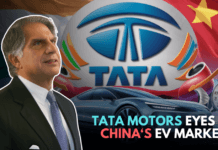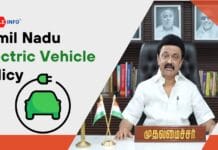Will the automotive industry be the same again? Well, probably not. The days of internal combustion engine (ICE)-powered vehicles seem to be coming to an end. If not a sudden end, it surely has to transform to churn out more electric vehicles to stay in the market.
India aims to become a global EV hub in the electric vehicle market With several major automakers and EV start-ups working extensively on electric vehicles, the penetration of BEVs has increased significantly in the last five years.
However, this increase still amounts to less than 1 percent of the sales. Hence the potential for growth remains immense. While the industry remains nascent, a company has to overcome several obstacles to dominate the market.
Electric Vehicles Market in India
The India Electric Vehicle Market was valued at USD 5 billion in 2020 and is expected to reach a whopping USD 47 billion by 2026 while registering a CAGR of above 44% during the forecast period (2021 – 2026).
Though, the Indian automotive market has been impacted by the outbreak of the COVID-19 pandemic due to supply chain disruptions and halt of manufacturing units due to continuous lockdowns and travel restrictions across the country coupled with the financial crunch faced by consumers.
On the other hand, electric vehicle (EV) markets saw an uptick in inquiries. It is expected to grow faster during the forecast period due to various government initiatives and policies. The government, too, has rolled out several incentives to both the consumer and manufacturer to stimulate the EV market.
Apart from the general public, the interest in EVs among corporations and governments is growing. E-Commerce companies (Amazon, for example) are launching initiatives to use e-Mobility for last-mile deliveries to reduce carbon footprint.
The Government of India and several other state governments are experimenting with e-Mobility for public transport and have deployed electric intercity buses across major cities.
India offers the world’s largest untapped market, especially in the Electric two-wheeler segment. As 100 percent foreign direct investment is allowed in this sector under the automatic route market is expected to gain momentum during the forecast period.
Current EV Market Scenario In India
Though the automobile industry reported a lukewarm response after the lockdown, the case has been different for the EV industry.
The EV industry reported a month-on-month increase in sales as well as inquiries about the products. While there has been a sharp decline in demand in April and May 2021 due to the second round of lockdowns imposed by the government, the industry is expected to spring back in a few weeks.
Source: Vahan Dashboard, JMK Research
Now, coming to the demand of EV when it is split state-wise. The graph shows that the state of Uttar Pradesh is among the major consumer of EVs while Assam has the 2nd highest sales followed by Maharashtra.
Challenges for India to Adopt Electric Vehicle in India
Well, it’s great to read to know that the electric vehicle market is poised to grow. But then, the companies and the industry have to overcome some obstacles to capitalize on the market entirely. Let’s have a look at such obstacles:
Rang anxiety
Rang anxiety: One of the most sticking factors. A question on everyone’s mind before purchasing an EV. The EV customers are often worried about the vehicle’s capability to reach the destination before the battery dies out and the absence of charging infrastructure. The charging infrastructure is considerably weak in rural or sparsely populated areas.
Consumer Protection
Consumer protection: While the technology is still relatively new and is being accepted more day by day, The repair and maintenance network is still very minuscule compared to ICE vehicles. The lack of people skilled in EV maintenance is one of the major causes of this challenge.
High Initial Cost
High initial cost: Electric vehicles are initially very expensive compared to ICE cars. For example, the Tata Nexon price starts from ₹7.19 lakh, while the Tata Nexon EV price starts from ₹13.99 lakh.
Scarce Battery Technology
Scarce battery technology: The number of OEMs manufacturing batteries from raw materials in India is very tiny. Coupled with the fact that the country lacks certain minerals (cobalt and lithium) to produce a battery, it negatively impacts the country’s ambition to become an EV hub. The country currently relies heavily on Chinese and Korean manufacturers.
Lack of products
Lack of products: The number of choices a consumer has while purchasing an Ev is significantly less when compared to buying an ICE. For Example, there are several choices for a superbike (ICE) but very few (if not none) EV that are mass manufactured.
Business Opportunity in EV Sector for Small Scale Industries
Following are the list of business opportunities in India are:
- Establishing EV fleet
- EV leasing
- Public charging Stations
- Swapping Stations
- Battery recycling Business
- Grid energy storage modules
- EV service and maintenance
- Battery pack and cell manufacturing
- Solar integrated EV charging
- EV Training services
Read Here: Business Opportunities in EV Sector For Small Scale Industries
Central government Policies for Electric vehicles In India
The Government of India has taken multiple initiatives to promote manufacturing as well as the adoption of EVs. Though these have been welcomed by the EV manufacturers, they can be further encouraged by proposing and enabling frameworks.
- National Electric Mobility Mission Plan 2020 (NEMMP): Launched in 2013 by the Department of Heavy Industry (DHI).
- FAME (Faster Adoption and manufacturing of hybrid and electric vehicles )Phase: Notified in April 2015, to promote the manufacture of electric and hybrid vehicle technology and mainly focuses on four aspects – demand creation, technology platform, pilot projects, and charging infrastructure.
- FAME Phase II: Launched in 2019 for a period of three years, this scheme has an outlay of US$1.36 billion to be used for upfront incentives on the purchase of EVs as well as supporting the development of charging infrastructure. FICCI has asked for the continuation of FAME II till 2025, along with short-term booster incentives to enhance demand.
- Amendments to FAME Phase II: the subsidy per electric two-wheeler (Indian-made), which is linked to the battery size, has been increased to INR 15,000 (US$204.60) per Kilowatt-hour (KWh) from INR 10,000 (US$136.40) KWh.
- Furthermore, electric two-wheeler manufacturers can now give discounts of up to 40 percent to consumers, which is a significant rise from the previous cap of 20 percent.
- The eligibility criteria for these electric two-wheelers to qualify for a subsidy under the FAME II scheme include a minimum range of 80 km on a single charge and a minimum top speed of 40 km per hour.
- Ministry of Power: It has clarified that charging EVs is considered a service, which means that operating EV charging stations will not require a license. It has also issued a policy on charging infrastructure to enable faster adoption of EVs.
- Ministry of Road Transport and Highways: It has announced that both commercials, as well as private battery-operated vehicles, will be issued green license plates. It has also notified that all battery-operated, ethanol-powered, and methanol-powered transport vehicles will be exempted from the commercial permit requirement.
- Niti Aayog: The National Mission on Transformative Mobility and Battery Storage has been approved by the cabinet, and the inter-ministerial steering committee of the Mission will be chaired by the CEO of Niti Aayog. The Mission aims to create a Phased Manufacturing Program (PMP) for five years till 2024, to support setting up large-scale, export-competitive integrated batteries and cell-manufacturing Giga plants in India, as well as localizing production across the entire electric vehicle value chain.
Source: India-briefing.com
State government Policies for Electric vehicles In India
The above was a short description of the states and the type of subsidies provided. The states that have an EV policy are given below :
Visit here, for a detailed list of policies: EV Policies and Subsidies of 13 States of India | State-wise EV Policies & Subsidies
Trends and Future Developments in the EV market
The absence (or reduced presence ) of charging stations will result in long queues and wait times. In such a case, Wireless charging on the road has the merits of security and ease in charging when vehicles are at rest or moving. A good-performance battery charger having a simplified circuit and control method is important for anThe drives section has enormous potential for research using SRM drives apart from drives using BLDC and PMSM motors.
An increase in the number of EVs and charging points affects voltage quality and harmonics that reduce the performance of integrated renewable energy resources and smart-grid electrical transmission networks. Peak-load management permits energy suppliers to reshape load profiles, raise energy efficiency and cut general operational expenditures and carbon emissions.
Increasing penetration of EVs in upcoming smart grids would be a test and an opportunity for power grids. If managed perceptively, they can reduce the peak grid demand. It should address power quality problems that influence the functioning of integrated renewable energy sources and smart-grid electrical transmission networks when integrated with EV.
Summary
The EV sector presents a high prospect of shaping the transportation sector’s future while helping us prevent global warming caused by traditional automotive dependence on depleting fossil fuels. This article outlines the market opportunities, challenges, business opportunities, and the future of Electric Vehicle.
The EV categories and related terminologies are explained. Electric Vehicles have huge scope to endorse a healthier and eco-friendly system by integration with smart grid and renewables.




